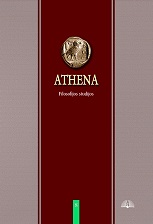Paminklas ir laikas. Viollet-le-Duco ir Ruskino kontroversija
Monument and Time: Viollet-le-Duc and Ruskin Controversy
Author(s): Arūnas SverdiolasSubject(s): Philosophy
Published by: Lietuvos kultūros tyrimų
Keywords: craft work; return; hermeneutics; conservation; time; monument; heritage preservation; heritage; restoration; architectural building
Summary/Abstract: The paper examines the mode of being of a craft work as it transforms into a monument. Monumentalisation, in its turn, is inscribed into the context of a work’s fundamental transformations – its decay and return, – which is said to expand Martin Heidegger’s thought on the issue of the usefulness of the tool. Thematically, the paper analyses a crucial episode in the development of the theory of monumentalisation, the collision of the opposing conceptions of restoration and conservation of the twentieth-century theorists of architecture Eugène Viollet-le-Duc and John Ruskin, a collision that has been affecting the theory and practice of heritage preservation ever since these theories appeared. The analysis highlights and explores the premises of each theorist, primarily focusing on their view of time, which implicitly and yet fundamentally underlies their thinking. Heritage preservation appears as a hermeneutics of the material plane of a work (a building in this case), and the paper foregrounds its relationship with the tenets of the romanticist hermeneutics of the time, Viollet-le-Duc’s and Ruskin’s theories being presented as variants of this outlook.
Journal: Athena: filosofijos studijos
- Issue Year: 2012
- Issue No: 8
- Page Range: 134-166
- Page Count: 33
- Language: Lithuanian

